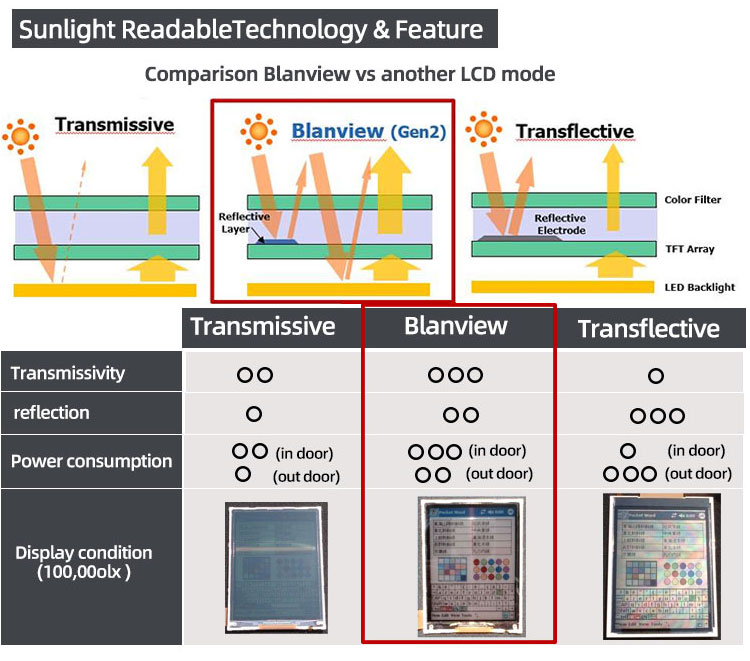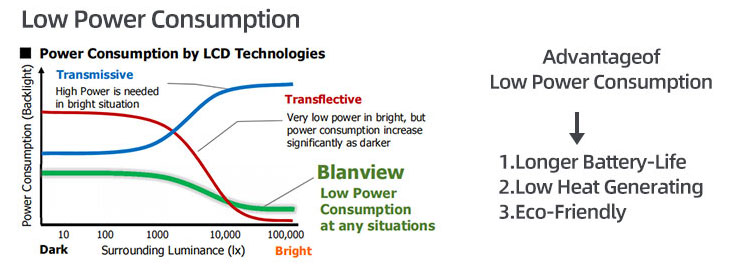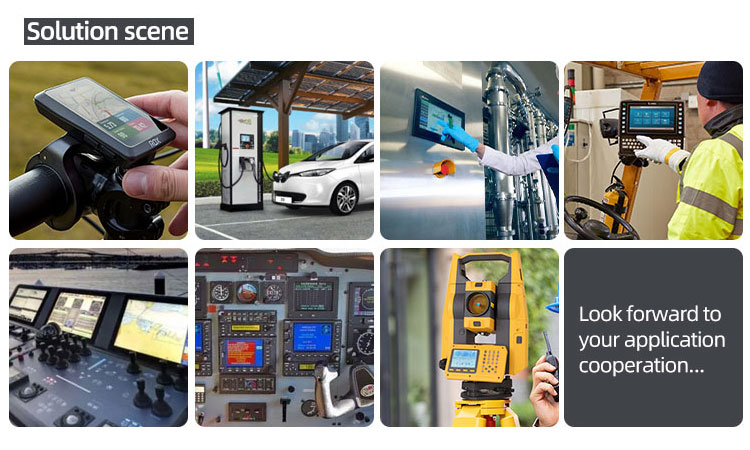Sunlight readable displays are screens specifically designed to maintain high visibility and legibility even under direct sunlight or in bright outdoor conditions. These displays are optimized to overcome the challenges posed by ambient light, ensuring that users can see content clearly without the screen washing out or becoming unreadable.
Key Features of Sunlight Readable Displays:
High Brightness (Nits)
Sunlight readable displays have significantly higher brightness levels (measured in nits) compared to standard displays. While most typical displays range between 200-400 nits, sunlight-readable displays can go up to 1,000 nits or more, making them much brighter and better able to combat direct sunlight.
Anti-Reflective Coatings
Many sunlight-readable displays incorporate anti-glare or anti-reflective coatings to reduce the amount of light that bounces off the screen. This helps prevent the "mirror" effect where reflections obscure the content.

High Contrast Ratio
These displays usually have enhanced contrast ratios, meaning that the difference between the brightest whites and darkest blacks is more pronounced. This ensures that even in bright conditions, the text and visuals stand out more clearly.
Transflective or Dual-Mode Technology
Some sunlight-readable displays use transflective technology, which reflects ambient light to supplement the display’s backlight. This allows the display to be readable in sunlight without consuming as much power, because it can use the available light rather than relying on its internal backlight. In some cases, these displays also have a dual-mode feature, switching between reflective and backlit modes depending on the lighting conditions.
Higher Resolution & Quality Panel
Sunlight-readable displays often use higher-quality panels, which improve readability even under harsh lighting conditions. These panels are often engineered to preserve color accuracy and sharpness in high brightness environments.
Improved Viewing Angles
To ensure readability from various angles (which is critical when the display is used outdoors and may be viewed from different positions), sunlight-readable displays often have better viewing angles compared to regular displays.
Durability
These displays are often built to withstand the elements, including direct sunlight, UV radiation, and other environmental stresses. They might also be more resistant to temperature extremes, dust, and moisture.

Applications of Sunlight Readable Displays:
Outdoor Kiosks and Digital Signage
Displays in outdoor public areas, such as digital billboards, wayfinding kiosks, or advertising screens, need to be sunlight readable to remain visible throughout the day.
Automotive Displays
In cars, especially those with navigation systems or touchscreens on the dashboard, sunlight-readable displays are essential for clear visibility of maps, controls, and infotainment functions when driving under bright sunlight.
Wearable Devices
Smartwatches and fitness trackers often use sunlight-readable displays, so users can easily check their stats outdoors without straining to see the screen.
Outdoor and Rugged Electronics
For devices used in rugged environments (like handheld GPS units, field devices, or military equipment), sunlight-readable displays ensure that the data is always visible regardless of the outdoor conditions.
Smartphones and Tablets (Outdoor Use)
Some smartphones, tablets, or e-readers, especially those marketed for outdoor or extreme conditions (e.g., hiking, boating, etc.), feature sunlight-readable displays to make them more functional in bright outdoor environments.
Industrial and Medical Applications
Equipment used in outdoor or high-light environments (such as construction machinery, agricultural machines, or medical devices in operating rooms) often uses sunlight-readable displays to ensure proper readability in various lighting situations.
E-readers
Many e-readers (like the Kindle) utilize e-paper or reflective display technologies that are sunlight readable, allowing users to read comfortably in direct sunlight, unlike regular LCDs or OLEDs that often become hard to read outdoors.
Types of Sunlight Readable Display Technologies:
Transflective LCD
This is one of the most common technologies used in sunlight-readable displays. The panel uses a reflective layer to bounce ambient light back through the screen, making it easier to see in bright environments. It’s highly power-efficient, too.
OLED Displays with High Brightness
OLED displays can be engineered for high brightness, making them more visible in sunlight. However, they typically consume more power in bright environments compared to transflective displays.
E Ink or E-Paper Displays
E Ink displays, often found in e-readers, use reflected light to display content, making them very effective in sunlight. They don’t need backlighting in daylight and maintain good readability even in bright sunlight.
LED-Backlit Displays with High Brightness
Some displays use LED backlighting with an increased brightness level (1,000 nits or more) to ensure visibility in sunlight. These are commonly used in smartphones, tablets, and rugged devices.

Conclusion:
Sunlight readable displays are engineered to be used in environments with high ambient light, offering increased brightness, anti-glare properties, and enhanced contrast to ensure content remains visible. Whether it’s for outdoor advertising, rugged devices, or wearables, these displays help ensure usability in challenging lighting conditions.
Sunlight Readable Displays Solutions for Diverse Applications
Brightness from 0-3000 for perfect display effect achievement. 100% NTSC makes the vividness of the picture better and the color transition in the picture more natural.
Color Temperature is positive white at around 5500K, warm white (yellowish) at 3500K and also cool white (cold) at 6500K.
Driver circuit with sufficient voltage and current values to meet output requirements and reduce the secondary development cycle.
Heat dissipation for high-brightness products to advance design of reasonable heat dissipation structure.
Power consumption, we increase the brightness without increasing the power consumption.
Cables, Backlighting also requires cables, either through an FPC connected to the LCD's FPC and controlled through a port, or a separate cable that controls it through a connector.LED life reached the standard of 30K hours Min. 50K, 70K, 100K hours are all achievable.

Sunlight Readable Displays Touch screen,standard type and customization 
Sunlight Readable Displays Driver board/adapter board, standard type and design customization
DEMO board, H-DMl board, other customized board, etc.

Sunlight Readable Displays Embedded Integrated Solution
UART display solution, H-DMl display solution, Window display solution, Android display solution, Raspberry Pi solution, portable secondary screen solution, etc.